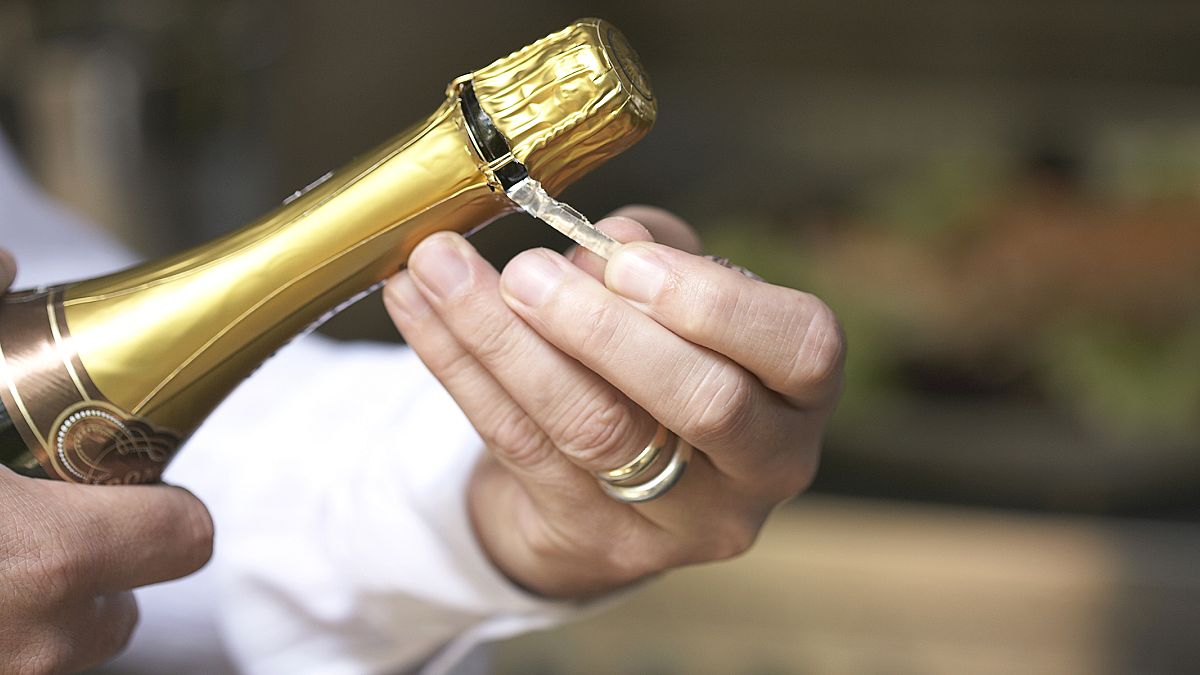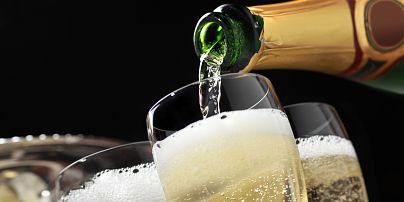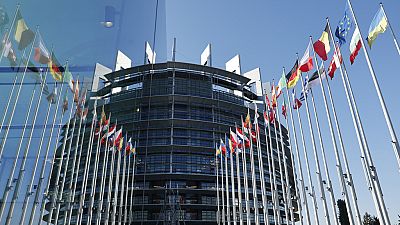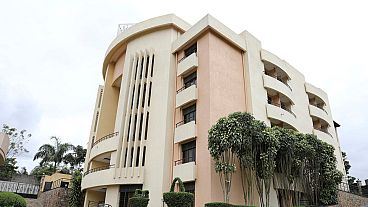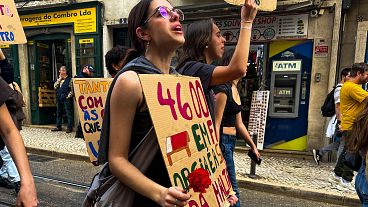And everything else you need to know about serving sparkling wine!
Ringing in the New Year without raising a glass of Champagne is almost sacrilegious. Imagine celebrating a birthday without cake or the Fourth of July sans fireworks.
A great bottle of bubbly is usually reserved for special occasions and could easily be the costliest thing you drink all year. In other words, it's imperative to open, pour and store Champagne correctly to get the most out of the experience. TODAY Food asked some top sommeliers like Serena Carl, Curator of Wine at QT Hotel Sydney in Sydney, Australia (the first city that will ring in 2019) to share their best tips on how to open and properly enjoy this bubbling beverage.
Here's how to handle the holy grail of sparkling wines or, if you can't afford Champagne, what to buy instead.
How to open a Champagne bottle
Carl stresses safety first. "Point the bottle away from your face and keep your thumb on the cork, at all times!" According to the American Academy of Ophthalmology (AAO), Champagne corks cause hundreds of reported eye injuries every year. That's due to the bottle's high pressure, which is sometimes higher than the pounds per square inch found in a car tire, an can launch the cork up to 50 miles per hour!
Before getting started, make sure your bottle is chilled. After removing the foil and unwinding the wire cage around the cork, keep applying pressure to it as you turn the bottom of the bottle. "Even though the 'pop' of a cork flying represents a Champagne celebration, it's messy," Carl told TODAY Food. "It also means the Champagne is warmer than it should be. Although not all Champagne needs to be enjoyed extremely cold, it's definitely easier to open when it's a cooler temperature."
The AAO recommends chilling Champagne to a minimum of 45 degrees. The colder the bottle, the more control you'll have over the cork. Continue applying pressure (use a towel over it if desire) and as soon as you feel the pop gently ease the cork out of the bottle to keep the Champagne from fizzing all over the place. If you really want to impress your guests, consider running a Champagne sword along the seam of the bottle. "Sabering is a traditional practice at QT," said Carl. "We get our guests involved in it, and it's a lot of fun. However, preparation and experience are key." If you're just getting started, leave the sword mastery to the pros.
How to pour Champagne
Pouring Champagne can be just as intimidating as opening it. "It's tricky and there are many methods," explained Carl. "Some Champagne is delicate and needs careful pouring by tilting the glass at an angle. Others need a bit of 'opening up' by pouring straight into the glass from a distance."
Maureen Petrosky, an entertaining expert, likes to prime her glass first with a 1-ounce pour. After the bubbles (also known as mousse) settle, top the glass off slowly — much like you would a can of soda or beer to avoid an overflow. Also, keep in mind that Champagne glasses aren't always the best serving vessels. Though festive, they weren't really designed with the whole experience in mind.
Carl is far from a stickler when it comes to the glass: "Flutes are standardly used in most venues. But to really get to know and taste a good Champagne, it's better to use a standard wine glass." She chalks this up to the glasses' wider circumference which allows for a more aromatic and flavorful experience as the Champagne is exposed to oxygen.
The different types of Champagne (technically, there's only one)
Like many wines, Champagne is named for the region where it is produced. Carl's favorite Champagne pairing unabashedly pays homage to its roots in France: "Ruinart Blanc de Blancs NV and french fries —as crazy as it sounds, the combo is delicious." Established in 1729 in France, Ruinart Blanc de Blancs is one of the world's oldest Champagne houses. For a wine to be labeled Champagne, it must come from the Champagne region in France and meet the industry production standards. This tight quality assurance translates to a higher price tag for consumers.
For Champagne tastes on a sparkling wine budget, consider cava or prosecco which are both significantly cheaper. For example, Wine.com's cheapest bottle of Champagne is $15 while bottles of prosecco and cava start at $5 and $9, respectively. Prosecco is Italy's answer to Champagne and tends to be sweeter and more fruity (it's aged in steel tanks before being bottled), while cava, which hails from Spain, is usually made in the "methode traditionnelle," meaning that the wine's secondary fermentation occurs in the individual bottles, like Champagne.
How long does Champagne last?
There's a reason Champagne is a great party treat to share with dear friends: Opened bottles of Champagne don't last long. If you really can't finish a bottle on New Year's Eve, there are a few things you can do to extend that bottle's life.
"A Champagne stopper is ideal, but few people have those, so it's fine to use a traditional wine cork," Carlton McCoy, the Master Sommelier and Wine Director at The Little Nell in Aspen, Colorado, told TODAY Food. Once opened, Champagne will last about 24 hours in the fridge, said McCoy. "If kept longer, you can still drink it, but it'll be a still wine now!" That is, of course, unless you tamper with it.
For example, Matthew Kaner, owner of Augustine Wine Bar in Sherman Oaks, California, uses silverware to keep the bubbles alive. "Put a spoon in to the bottle, handle down," Kaner, a 2013 Food & Wine Magazine Sommelier of the Year, told TODAY Food, "I don't understand why this works, but it will extend the bubbles for another day or two." Don't have a spoon? Add more grapes. Last year, Hoda Kotb and Jenna Bush Hager confirmed that a raisin really can make flat Champagne bubbly again. But for maximum enjoyment, aim to finish a bottle within less than 24 hours.
How to store Champagne?
Unless you have a wall-sized wine fridge like Heather Dubrow of Bravo's "Real Housewives," it's best to store unopened bottles of Champagne in any cool, dark environment. Bottles can actually last for decades but keep in mind that like wine, Champagne flavors change with age — and there is a peak time to open most bottles. But sometimes it's just too hard to resist a great bottle of bubbly! Said Carl, "Unfortunately, I usually get too excited to wait to open a good one."
We'll cheers to that!
